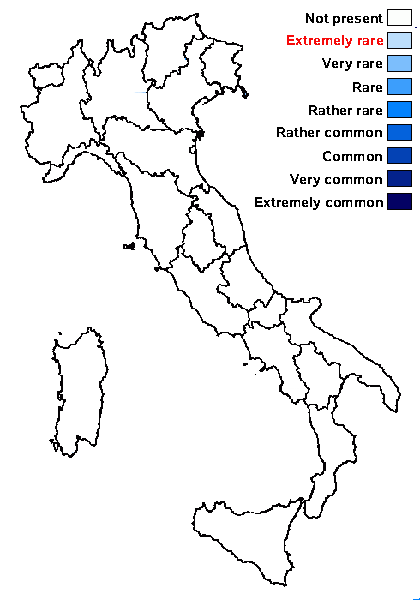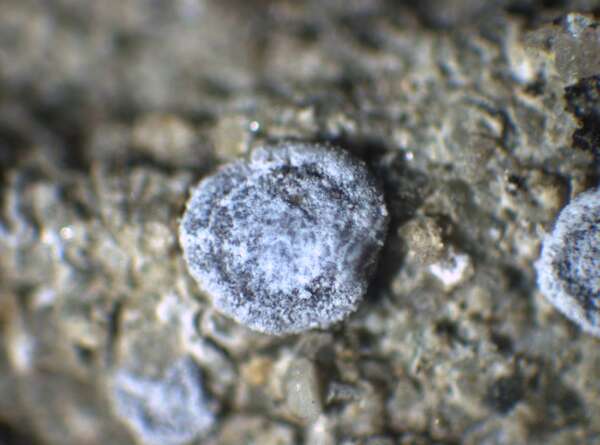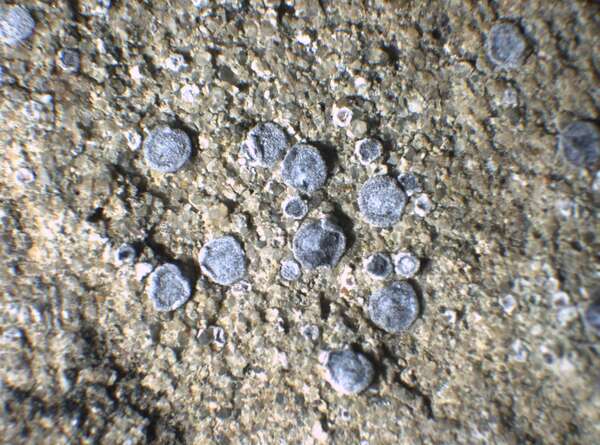Sarcogyne nimisii K.Knudsen, Kocourk. & Hodková
Herzogia, 36, 1: 65, 2023
Synonyms:
Distribution: N - VG (Knudsen & al. 2023).
Description: Thallus crustose, endosubstratic, poorly evident. Apothecia lecideine, 0.4-0.7 mm across, with a brown-red, flat, epruinose disc, and a thin, black, raised, undulate proper margin. Proper exciple of radiating hyphae with swollen and dark brown tips, dark brown in outer part, pale brown to colourless within, the darker rim not clearly delimited from the paler medullary part, 120-130(-140) μm wide; epithecium brown; hymenium colourless, 65-85 µm high, the hymenial gel euamyloid, IKI+ persistently dark blue; paraphyses coherent, simple to sparingly branched, regularly septate, not capitate; hypothecium brown-black. Asci >100-spored, cylindrical-clavate, strongly thickened at apex, the apical dome K/I-, the outer coat K/I+ blue. Ascospores 1-celled, hyaline, narrowly ellipsoid, 3-5 x 1-1.5 µm. Photobiont chlorococcoid. Spot tests: thallus K-, C-, KC-, P-, UV-. Chemistry: without lichen substancesNote: a recently described calcicolous species, hitherto known only from the Trieste coast, which surprisingly clusters together with a group of American species (see Knudsen & al. 2023).
Growth form: Crustose endolithic
Substrata: rocks
Photobiont: green algae other than Trentepohlia
Reproductive strategy: mainly sexual
Commonnes-rarity: (info)
Alpine belt: absent
Subalpine belt: absent
Oromediterranean belt: absent
Montane belt: absent
Submediterranean belt: very rare
Padanian area: absent
Humid submediterranean belt: absent
Humid mediterranean belt: absent
Dry mediterranean belt: absent

Predictive model
Herbarium samples
Growth form: Crustose endolithic
Substrata: rocks
Photobiont: green algae other than Trentepohlia
Reproductive strategy: mainly sexual
Commonnes-rarity: (info)
Alpine belt: absent
Subalpine belt: absent
Oromediterranean belt: absent
Montane belt: absent
Submediterranean belt: very rare
Padanian area: absent
Humid submediterranean belt: absent
Humid mediterranean belt: absent
Dry mediterranean belt: absent

Predictive model
| Herbarium samples |
 INDEX FUNGORUM
INDEX FUNGORUM
 GBIF
GBIF





